MOBILE, Ala. — The effort to restore Amtrak service on the former Sunset Limited route east of New Orleans is being boosted by a $33-million federal grant, but route improvements must be worked out before that service can begin.
The federal money, part of a $66-million effort, will help finance capacity-improvement work on 140 miles of CSX Transportation trackage between New Orleans and Mobile, Ala. The Federal Railroad Administration’s Consolidated Rail Infrastructure and Safety Improvements (CRISI) grant was announced Friday at the Southern Rail Commission meeting in Baton Rouge, La.. Those funds will be matched by commitments to supply capital investments and initial operating support from Mississippi, that state’s department of transportation, Louisiana, Amtrak, and the city of Mobile.
Although Alabama stands to benefit from the proposed two daily route trips serving its port city along the heavily-congested U.S. 90 and Interstate 10 corridor, the state under Gov. Kay Ivey has so far declined to participate in efforts to secure a CRISI grant. [See “After missing funding, Gulf Coast rail effort seeks a way forward,” Trains News Wire, July 5, 2018.]
In a statement to al.com, Ivey said she “wants to make certain we know what kind of long-term financial commitments will be, long after the grant has been spent,” and what effect the passenger service would have on the Port of Mobile, which is already receiving $150 million in state aid for an enlarged ship canal. The Southern Rail Commission estimates Alabama’s share of the capital match at $2.7 million.
However, Commission Vice Chairman Knox Ross tells Trains News Wire that the group has had numerous meetings with port officials to discuss their needs and continues an active dialogue.
“We all agree that Alabama Docks issues need to be resolved before service can begin, but the CSX yard and port track leads are all east of the proposed station near the convention center in downtown Mobile, so there will be minimal interference,” Ross says.
He adds, “Our ultimate goal is to extend one of the round trips east to Orlando [as a long-distance train] and we are looking at future service between Mobile and Birmingham, Ala., but New Orleans trains won’t pass through that area. In fact, there is money set aside in the grant to study what mitigations might be necessary to run passenger trains through the yard if and when that should happen.”
Ross says Amtrak and CSX are set to revisit a 2017 Federal Railroad Administration report that estimated necessary New Orleans-Orlando infrastructure improvements at $117.9 million. A CSX consultant had put forward a figure exceeding $2 billion [see “Gulf Coast plan revealed,” “Passenger,” Trains, July 2017]. The current $66-million estimate was derived by stripping out elements east of the Mobile station, which include a long stretch of unsignaled dark territory.
Amtrak management has fully supported the efforts to move the initiative forward by the commission, U.S. Sen. Roger Wicker (R-Miss.), Govs. John Bel Edwards (D-La.) and Phil Bryant (R-Miss.), and Transportation for America Chairman John Robert Smith. Joe McHugh, the company’s vice president, state-supported services, says in a statement, “Amtrak endorsed this grant application because we believe this project makes sense for the Gulf Coast region … and we are looking forward to working with the team to accomplish the next steps.” McHugh told Ross he expects that, assuming agreements are reached, service could begin in 24 months.





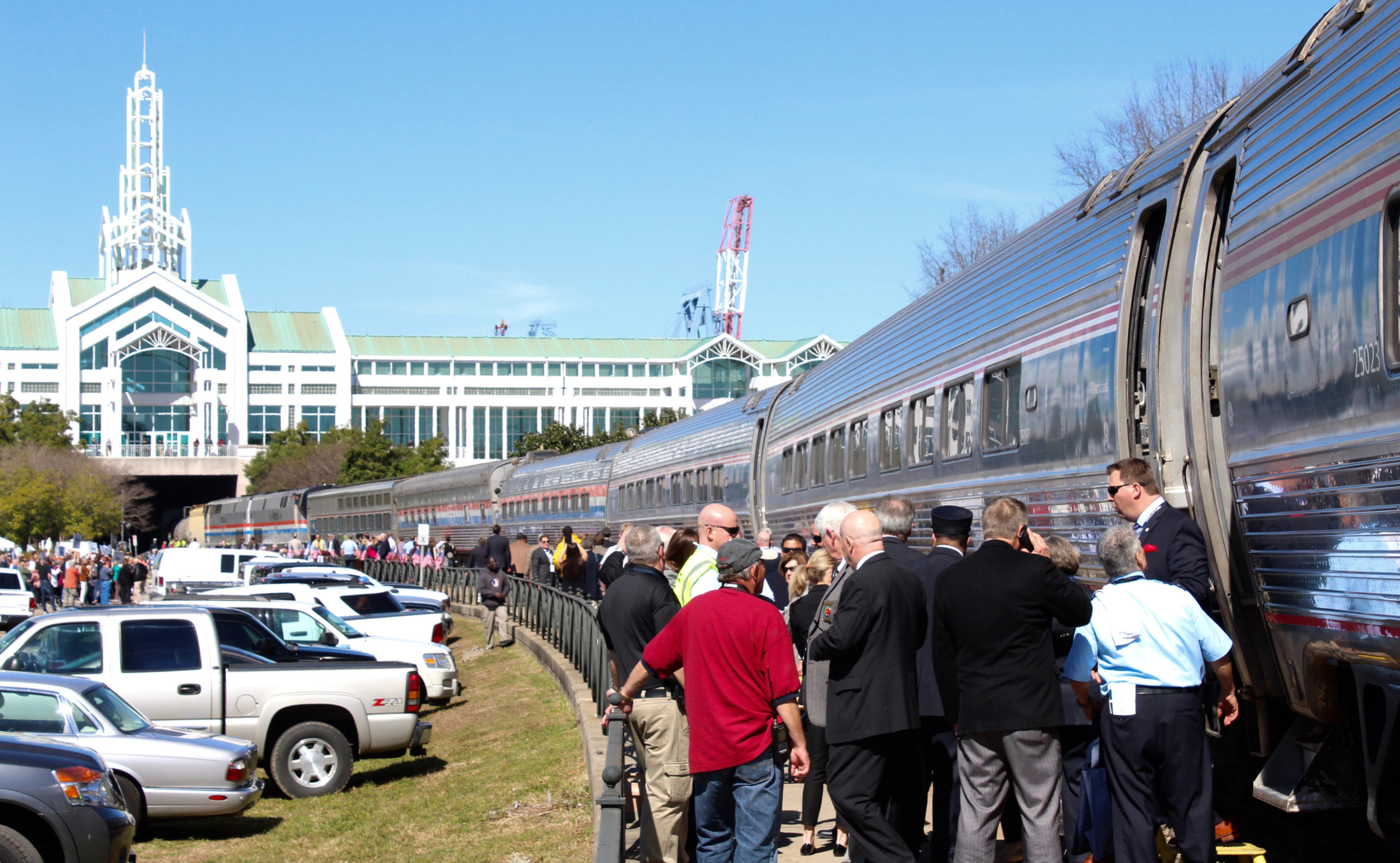
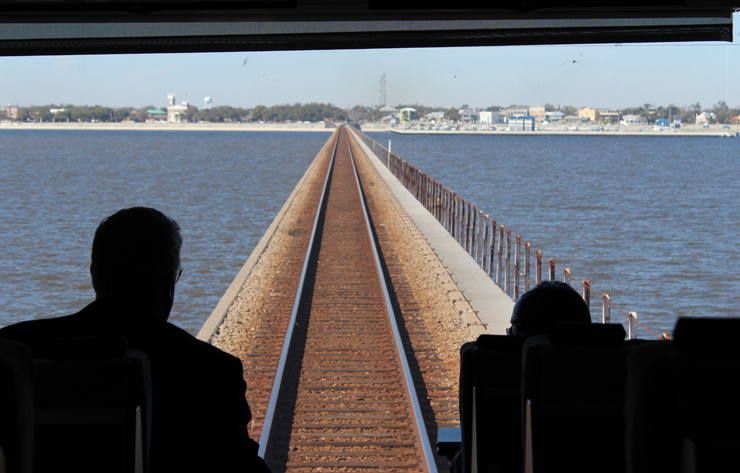

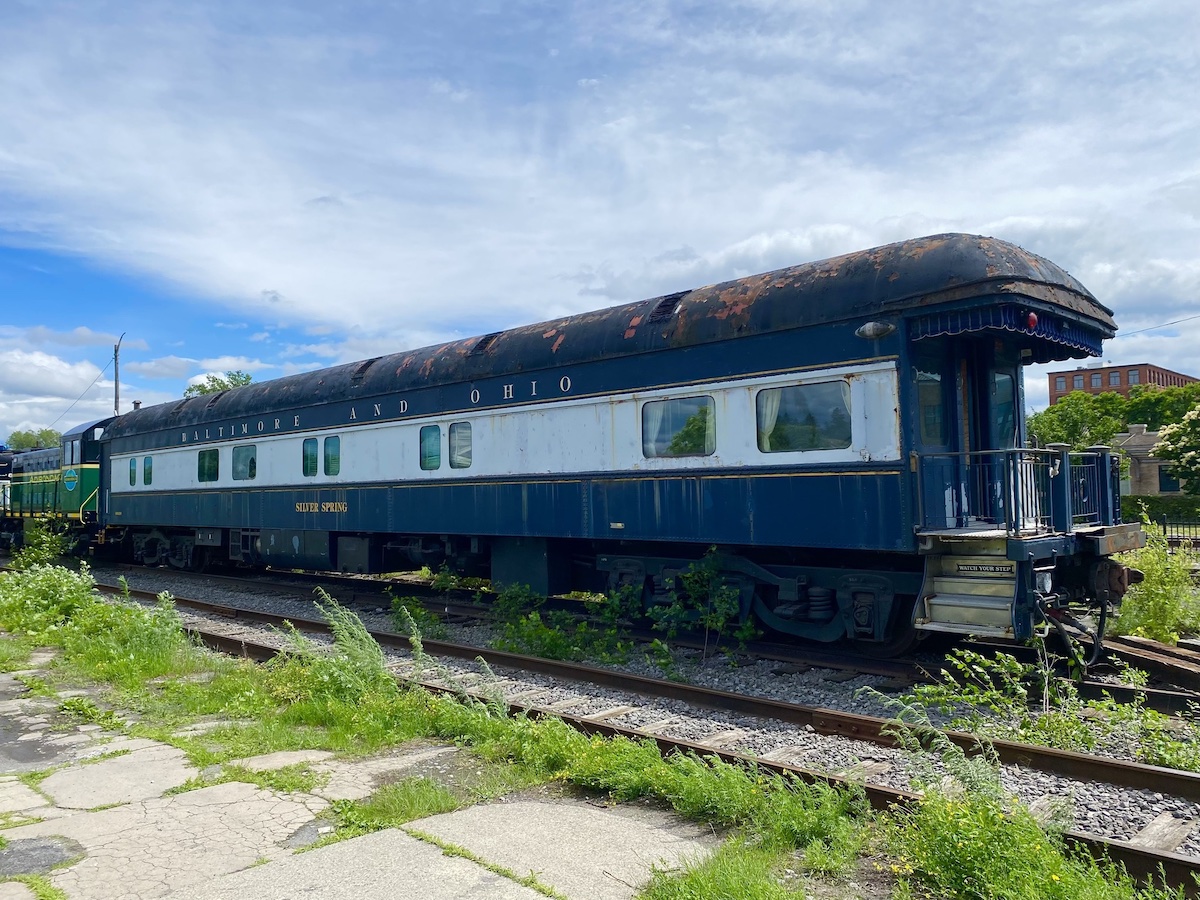
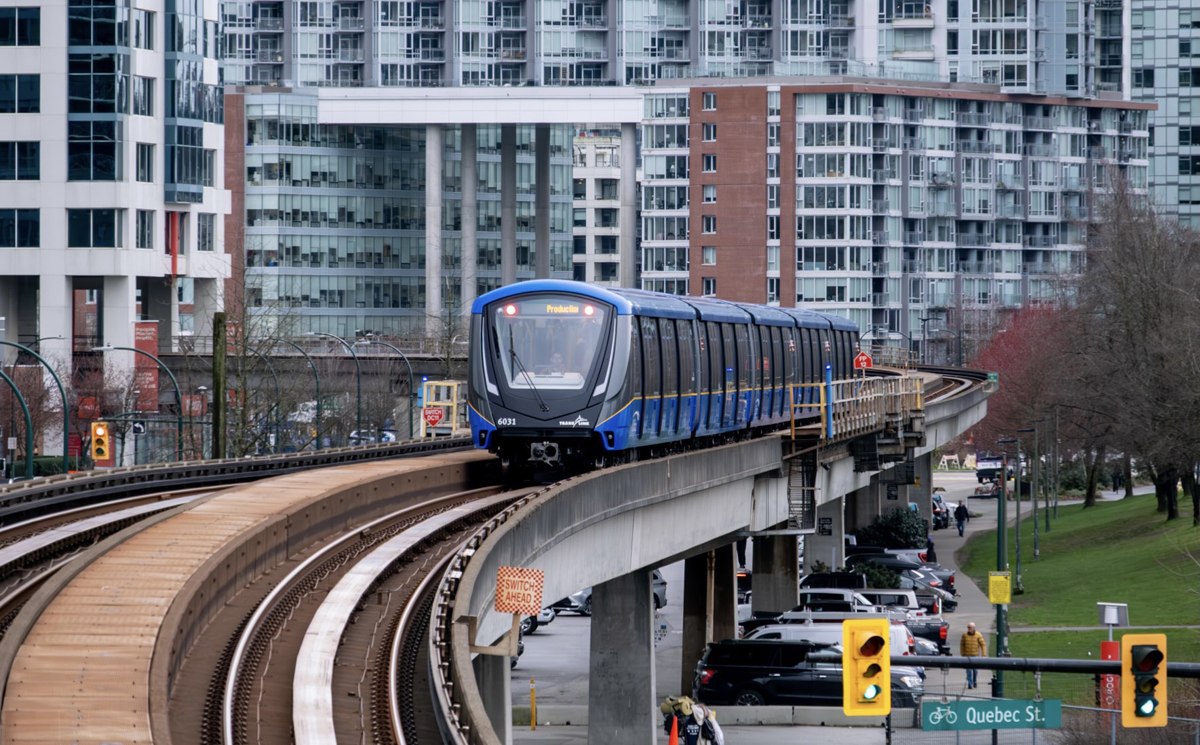
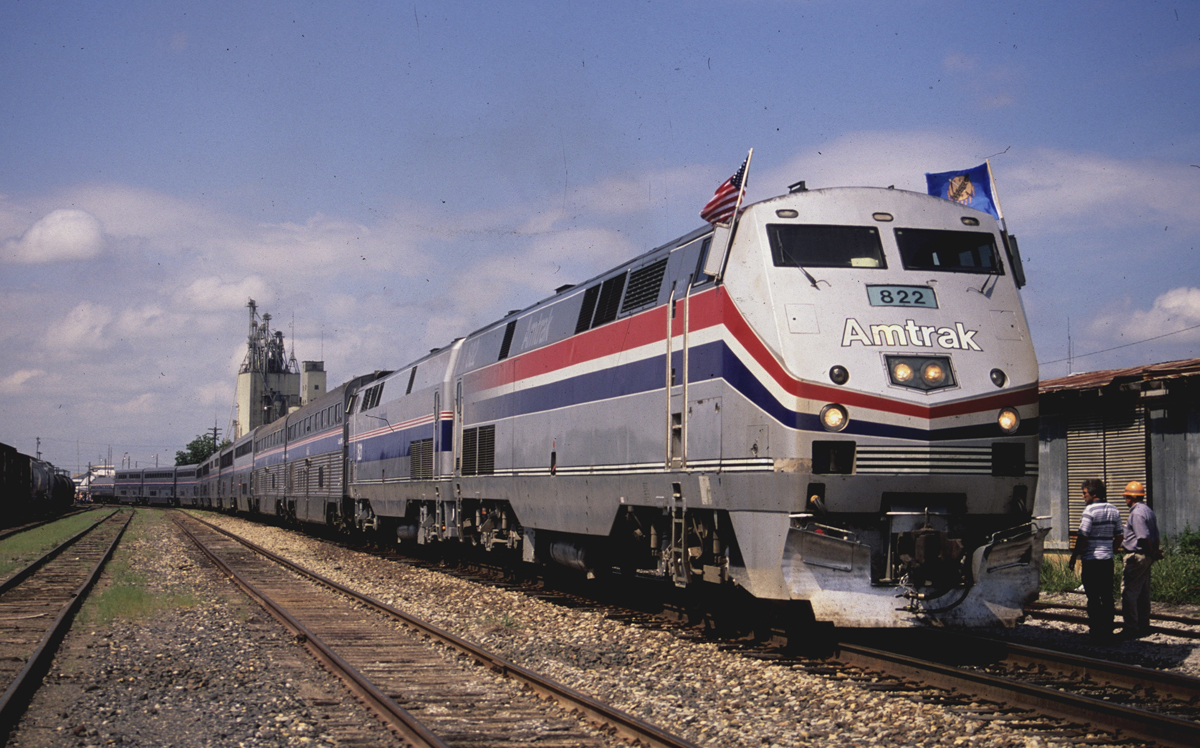
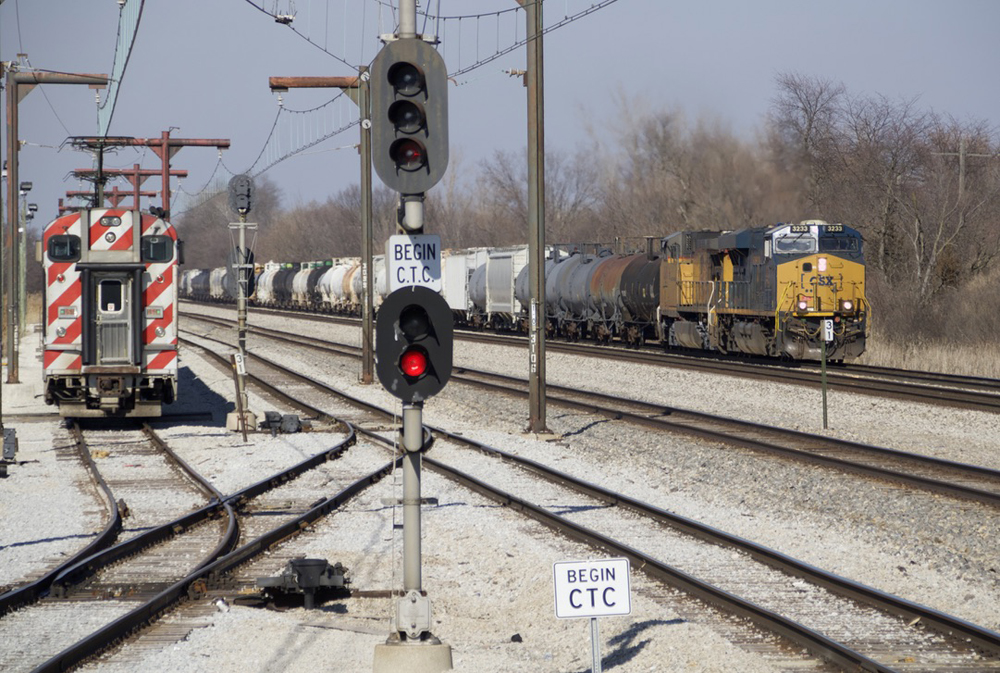




The Railroad Station Historical Society recently visited some stations along this route, including Pascagoula and Bay Saint Louis in Mississippi. One of the local residents of Bay Saint Louis we met said she would welcome the return of train service; she noted that city was a “weekend getaway” spot for New Orleans residents. In any case, that Mississippi Gulf Coast looked like an enjoyable place to visit, though with so many structures built on stilts it was clear that hurricanes/storm surges are an ever-present risk.
For those who think passenger trains are liked or disliked according to ones political party, try this on for size. I am a very conservative Republican and I love to ride the train. A multi-day train trip suits me just fine. My wife, on the other hand, is a Democrat and she loves to fly and wouldn’t be caught dead on a train that takes over three hours to get somewhere. If it weren’t for a former Republican Senator from Texas, The Texas Eagle wouldn’t exist today. The truth is, when it comes to the steel meeting the rail, almost all politicians will back their local Amtrak services, even if they don’t understand the true costs of all modes of transportation. A little more balance in funding and better marketing could make a big difference in the public perception.
The same tired arguments about the ethics of the Amtrak subsidy are totally ludicrous in today’s economic climate. Amtrak covers about 95% of its costs from revenues. The annual Amtrak subsidy is hardly a rounding error in the US Government budget. For this, Amtrak transports over 30 million passengers, employs thousands of employees who pay taxes, has contracts throughout the country creating a tremendous economic impact, and provides a vital link between rural and urban communities. In comparison, Greyhound carries around 16 million. It provides a huge economic impact, an impact that is equally important per capita in rural areas like Havre, Montana or Dodge City, Kansas as it is for Philadelphia, Pennsylvania. I realize that many of the comments here present the view that Amtrak riders are elderly tourists riding the rails because they are afraid to fly or want a leisurely, long distance trip. As someone who has lived in rural areas served by Amtrak, I can attest to the fact that it is a useful and used lifeline between rural communities and urban areas, and that Amtrak passengers are well distributed among age groups. The old myth that America is simply too sparsely populated to support rail is simply false. Most of the midwest is as densely populated as France. Again, the Amtrak subsidy is irrelevant to the Federal budget; totally irrelevent because it is miniscule. We need to stop talking about retrenchment and start talking about expansion. Every current Amtrak route provides a valuable service, and allows for the expansion of rail that millennials, who are increasingly eschewing autos, demand. The future is bright for passenger rail if we stop repeating the same old falsehoods that have been around since the Penn Central days.
Amount the Federal government spends annually on Highway construction & maintenance?
Amount the Federal Government spends annually on Airport construction & maintenance and the FAA ?
Amount the government spends on Amtrak?
Consider the subsidies!
A close friend of mine recently said to me – that if the United States were to lose every train that Amtrak is now operating, ninety-nine percent of the population would not notice – their lives would go on just as before, because it would never occur to them to take a train. The vast majority of the U.S. population (he asserts it amounts to approximately ninety-nine percent) drives a car or takes a bus – if traveling overland – or flies. He wonders why anyone would consider taking a train, especially given Amtrak’s very poor performance.
So, what do you readers here on this forum think? Is my friend right? Would the vast majority of the population of this country not notice any difference at all if Amtrak were to disappear tomorrow? If so, what’s the point of keeping it?
Mr. Vincenzo, I believe your friend is partially right. The vast majority of people could care less if Amtrak disappeared but that is only for the long distance trains. In the NEC Amtrak, such as it is, still provides a valuable service to the traveling public. There are people who wouldn’t ever consider taking the train on a long distance trip but don’t even think of flying or driving in the corridor between Boston and Washington. This may also be true, to a lesser but still significant extent, in Milwaukee – Chicago and in the California corridors along the west coast. But most people wouldn’t even think about a train trip out of those areas. And a good portion of those who have done so do it only once because it is an “experience” or a bucket list item. “Number 3, take train through the Rockies. Ok done that, what’s next on the list.” There are a very few people who take the LD train to actually get somewhere but their numbers are small and the cost to subsidize those trips is too high to justify. I have ridden every Amtrak (and VIA) long distance train and at least one train on every Amtrak corridor. Back in the day when I was younger it was a lot of fun but as I get older and mobility gets to be more troublesome, I find that I would rather spend 4 hours on a plane rather than 2 days and a night on the train.
Waste it on something _you_ enjoy? How about waste it on something _I_ enjoy. If we got rid of the income tax, we could all decide ourselves how to “waste” our own money and we wouldn’t be having this silly argument.
That said, there’s far more that can be said about the value of Amtrak and how much government monies are wasted or spent wisely. I’m not anti-train, I’m anti-waste. Many of these things are relayed in the comments below both pro and against long distance trains, and there’s a lot of truth to both sides. If we’re ever going to resolve this issue, we need to have solid and meaningful conversations about it. I would like to propose that such discussion actually happen somehow, if someone can organize a place to do it, I have a lot to contribute.
Mr. Rice wrote, “Any New Orleans to Orlando trains will not stop in Jacksonville.”
I don’t understand, has something changed since 2005? I rode the westbound Sunset about 5 months before Katrina and IIRC the train was wyed just S of the current Jacksonville station, using a line to the east. We backed in, then proceeded south past the yards again and then west toward Pensacola and New Orleans. All the required trackage appears intact today on Google Maps. The short backup move was no worse than the California Zephyr at Denver.
Mr Landry, ok passenger train haters. Still can’t understand why you worry about the minuscule amount of money that some on this site say is wasted on Amtrak. The government has and always will waste money, they might as well waste some of it on something I enjoy.
Penelope – If your Texas Limited covered ten percent of its cost via the ticket sales, I’d be (pleasantly) surprised. BTW your train would miss Nashville by, I don’t know, eight or ninety miles, I don’t have a map in front of me at the moment.
MARCO – The math is easy. Thirty-five million trips on Amtrak, that’s seventeen and a half million round trips. If every Amtrak passenger took only one round trip (which is silly) that would still be four percent of the population. If on average an Amtrak passenger took four round trips a year that’s one percent of the population. In my area, the Hiawatha is loaded up with people who take a hundred annual round trips.
I don’t see why Amtrak didn’t restart service once thr Class I’s repaired the tracks. The tracks were repay relatively right away, Whats the issue? Why Amtrak cancel NO to JAX?
I can see that the “Wouldn’t It Be Nice If…” crowd is out in force.
Further to the services proposed for the Tennessee Valley. I am wondering what passenger service demand data does Ms. Vinson rely on to support the detailed vision for The Texas Limited and the “voids” this train would eliminate?
I ride Amtrak every opportunity I have. I have no rail service where I live. I have to drive 150 miles to catch the train, but it’s worth every mile I have to drive. Do you like standing in airports, counting concourses? Why such negativity on something that would benefit people? Maybe you like and can afford flying or driving, some people can’t. Some people don’t fly. If the train was available to a larger populated area that could utilize it, why not have it available. I choose a glass half full any day. Respectfully, if you don’t like Amtrak don’t use it but for us that are lucky enough to have the alternative, we do use it. I look at it as a “jewel” and use it when I can. Why deny something that can only be an asset?
Ricky Sypert – So Amtrak is a “jewel” of public transportation? I guess so, compared to VIA Rail Canada, which is even worse. If Amtrak is a “jewel” in your mind, you don’t seem to ride it often.
So Ricky, what makes you think that the people needing transportation go where the train goes? What if someone in Pensacola wants to go to Atlanta, or to Nashville, or to Las Vegas, or to grandma’s ten miles into the countryside? What does this train got to do with them?
This weekend, I was at Detroit Metropolitan Wayne County Airport. The “A” Concourse which is part of the McNamara terminal which is part of the airport, has 78 gates. Twenty miles to the east, Amtrak Detroit New Center has one platform.
You can get from DTW to anywhere, whether it be Mexico City of Cincinnati or Atlanta or Traverse City or Shanghai or Cleveland. Tell me if this train you so support will do that kind of service.
Mr. Klass, being respectful, I thought I read 2 round trips daily, which would be double the benefits. This route has already had federal funding for up-grades and should be in excellent condition for restoring a service that can grow, as our population grows. Miniscule, as you state, is better than no passenger train at all.
There is only 1 way to reach Orlando from Mobile now and that is through Jacksonville. (All the southbound rails have been pulled out in between)
Problem is Amtrak moved the amshack north of where the east/west line would switch north/south to benefit trains running to Tampa.
So a Mobile/Orlando routed train either “skips” Jacksonville (by not stopping at all) completely due to lack of amshack access, or the amshack has to be moved.
Some people might say, “hey, move Amtrak back to a remodeled Jacksonville Terminal”. Possible except the switch to go south is west of the terminal. Any Orlando based train would have to back up to leave JT to reach the switch.
Other forward thinkers might say, just send Amtrak down the FEC to Cocoa and use the Virgin Trains ROW to reach Orlando and then Tampa. Same with Miami bound trains as well.
Oh, smart ones, then CSX will abandon the line to DeLand as excess since all freight goes south via Baldwin today. (FDOT owns the ROW from DeLand to Kissimmee for SunRail). The people west of the St Johns River (like Green Cove Springs and others) will scream that they are losing their Amtrak stations.
So what will the end result be?
Any New Orleans to Orlando trains will not stop in Jacksonville. They will just blow right through and maintain status quo.
While everybody is concentrating on restoring passenger trains to the Gulf Coast region of Missisippi and Alabama, and then eventually to Florida, there is a void to be filled in the Tennessee Valley. This extends from Memphis to Roanoke through the northern tier region of Missisippi and Alabama. The cities of Corinth, Missisippi, Sheffield and Huntsville, Alabama, Chattanooga (not including steam train excursions), Knoxville and Bristol have been without passenger trains long enough for a baby to be born and living now at middle age.
A new long distance train is needed that is equipped similar to the Crescent and Silver Meteor. It would run between New York and Washington (perhaps in tandem with an existing train), continue to Roanoke (stopping only to receive or discharge revenue passengers to or from Bristol and beyond), Knoxville, Chattanooga, Huntsville, Sheffield, Corinth and Memphis. After retracing the former route of the Tennessean, this train could gain greater success continuing beyond Memphis to Little Rock, Arkansas and Longview, Texas where it begins to fill the void in east Texas through Palestine, Conroe, The Woodlands and Houston.
This train would closely follow the former schedule of Southern Railway’s Birmingham Special between Washington and Chattanooga, and Train Nos. 35 & 36 between Chattanooga and Memphis (serving this region during the day unlike the Tennessean). Beyond Memphis, the schedule would correspond closely to that of Missouri Pacific’s original Texas Eagle between Memphis and Houston.
Not only would the voids in the Tennessee Valley and east Texas be filled. The route of this new train would be the most direct between New York and Houston. It follows the northeasterly tangent between the two cities via Memphis and Chattanooga.
[A potential name for this train would be the Texas Limited.]
Chris – Train haters? Well there are freight trains to love. Questioning the Amtrak subsidy and Amtrak’s five decades of failure doesn’t make one a train hater. Also loving airplanes doesn’t make one a train hater. I’ve been a switch hitter, trains and airplanes, since I was old enough to know what they were.
Chris, BTW FWIW my friend who I visited in Warren Michigan raised her family in Detroit but she herself is a Mobile native. (And returned to Mobile for a few years after the kids were grown.) She loves Mobile, your home town and hers. Like Hank Aaron she was born in Mobile in 1934.
Mr Landey and Mr. Farlane: The absolute worst argument justifying the expansion through The Heart of Dixie is the environment!
Once again I’ve got to wonder why train haters bother with a site devoted to trains. Anyway as much as I’d love to see Amtrak return to Mobile, my hometown, it’ll never happen with the backwards governor we have at present. Shes a diehard far right Republican and along with most of the rest of her followers in Montgomery, wont spend a dime on passenger trains. And as far as Amtrak’s trains interfering with port operations, that’s laughable. Anyone with even a minimal knowledge of the rail operations in Mobile knows there’s plenty of underused capacity on the double track main in downtown Mobile. Just a smoke screen to help shoot down passenger rail with the general public.
Gerald, your comments on the environment. So noted and I don’t necessarily disagree, which is one reason why I have supported trains for as long as there has been Amtrak. Sadly Amtrak has failed.
There is another way to look at it though, Gerald. Add up all energy to move a train. Everything from the locomotive diesel fuel to the crew positioning from home, to the daily commute of the station custodian or ticket seller, etc. etc. The energy to manufacture the train. Build that energy cost into the ticket (or into the subsidy).
Add up all the energy spent at DTW’s McNamara terminal. Hundreds of daily jet flights zillions of miles, the boundless cost in energy to have built the place, the thousands of working-class people commuting from Detroit or Livonia or Inkster to keep the place open, the Wayne County snowplows and fire/ rescue trucks, etc. etc. etc. The energy costs for Boeing or Airbus to build the plane in Seattle or France or Alabama and get it on line. Build that (very substantial) energy cost into the price of each ticket.
Fair enough? Given the amount of energy for Delta/ Air France/ KLM to fly hundreds of flights each day into or out of McNamara, you would think the ticket price to be in the thousands of dollars to go anywhere.
Then why is it that a Delta ticket (main cabin, a/k/a coach) is comparable to Amtrak (business class). Maybe Amtrak doesn’t save all that much energy after all.
Add Amtrak’s subsidy to the ticket price, Delta is about half the cost; maybe therefore half the energy.
Gerald you and I could have another discussion on the energy (in a rental car) to get me from DTW to Warren on the Detroit Industrial, Edsel B. Ford, Walter P. Chrysler and Walter P. Reuther Freeways. Fair enough Gerald but that discussion will have to wait for another time.
Charles,
Forget all your arguments on different route options and tell me which of those options is the most beneficial to the environment? If you know the answer then you’ll see why so many people want to add train services where ever possible.
I say bring it on! As long as highways and airports serving private industry continue to be generously showered with taxpayer money who gives two hoots in hell?
Ricky … Can I afford to fly? The question is, can I afford NOT to fly. I costed out four options Brookfield Wisconsin to Warren Michigan:
(1) Drive Brookfield Wisconsin to Warren Michigan. Would mean at least another night in the hotel, so there goes the savings. I basically dislike driving especially if driving alone as this trip was.
(2) Ferry my car on the Lake Express from Milwaukee over Lake Michigan, drive from Muskegon to Warren. By far the most expensive, and no time savings over driving through Chicago.
(3) Amtrak, changing at Chicago, and renting a car at Amtrak Detroit New Center. If business class east of Chicago, as expensive as flying and may have meant another night in a hotel or two nights.
(4) Flying. The safest and most comfortable. Flying was the only option if my time is worth anything and the best option if I wanted assurance I’d arrive in Warren Michigan on schedule.
Do I enjoy standing in airport concourses, counting gates, and watching people boarding plans for all over the world? Yes, I do, very much. I find it quite enjoyable. I enjoy airports (and the selection of food) much more so that sitting in Amtrak’s drab hut at Detroit New Center, then the train crawling at 15 miles an hour from New Center to West Detroit. My last trip to Detroit I did take the train because my friend was in fact at New Center (same friend, at the time she was in Henry Ford Hospital for surgery, not at home in Warren as this week). I thought the Amtrak trip was expensive and uncomfortable as well as a waste of my time.
Detroit is a great and a wonderful city, which we did visit from suburban Warren. (Can’t say the same about Michigan’s #3 city, Warren – it’s everything that can go wrong in a suburb.) I’m thrilled that I went and quite happy that I got there by air transport.